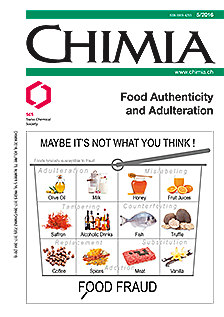Locally Grown, Natural Ingredients? The Isotope Ratio Can Reveal a Lot!
DOI:
https://doi.org/10.2533/chimia.2016.345Keywords:
Authentication, Cavity ring down spectroscopy (crds), Geographical origin, Isotope ratio mass spectrometry irms, Natural/artificial ingredientsAbstract
This communication gives an overview of selected isotope analyses applied to food authenticity assessment. Different isotope ratio detection technologies such as isotope ratio mass spectrometry (IRMS) and cavity ring down spectroscopy (CRDS) are briefly described. It will be explained how ?18O of water contained in fruits and vegetables can be used to assess their country of production. It will be explained why asparagus grown in Valais, in the centre of the Alps carries much less heavy water than asparagus grown closer to the sea coast. On the other hand, the use of ?13C can reveal whether a product is natural or adulterated. Applications including honey or sparkling wine adulteration detection will be briefly presented.Downloads
Published
2016-05-25
Issue
Section
Scientific Articles
License
Copyright (c) 2016 Swiss Chemical Society

This work is licensed under a Creative Commons Attribution-NonCommercial 4.0 International License.
How to Cite
[1]
J. S. Rossier, V. Maury, E. Pfammatter, Chimia 2016, 70, 345, DOI: 10.2533/chimia.2016.345.







